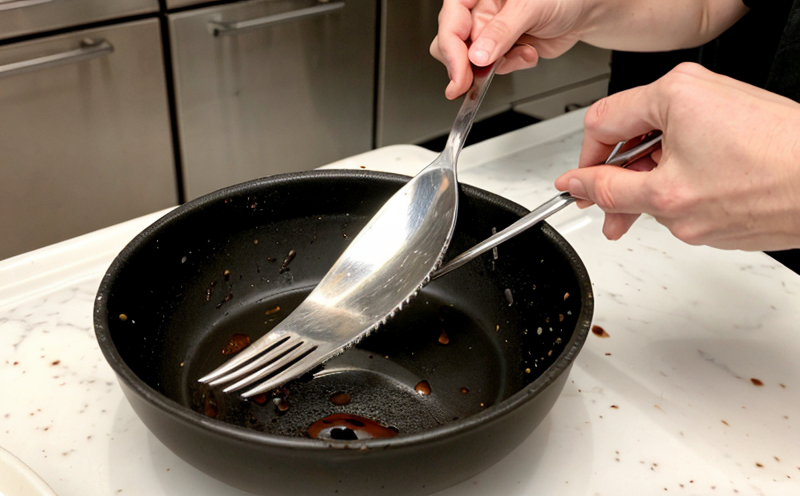Utensil hygiene inspection
In the realm of food safety and hygiene, utensil hygiene inspection is a critical component that ensures the integrity and safety of food products throughout their lifecycle. Utensils play an indispensable role in food handling, preparation, and storage, directly impacting the quality and healthiness of the final product. Consequently, rigorous inspections are essential to safeguard against contamination risks.
Food safety standards such as ISO 22000, ASTM E1798, and EN ISO 5164 provide frameworks that emphasize the importance of utensil hygiene in food safety. These standards outline the necessary measures to ensure that utensils are clean, free from contamination, and safe for use.
The process begins with the selection of utensils that meet specific hygienic requirements as per the relevant standards. This includes materials such as stainless steel or high-quality plastics which are known for their durability and resistance to bacterial growth. Proper cleaning and sterilization techniques form a crucial part of this inspection, ensuring that any potential pathogens are eliminated.
During inspection, utensils are subjected to visual checks, microbial testing, and sometimes chemical analysis depending on the nature of use. Visual inspections look for signs of wear, cracks, or any visible contamination. Microbial testing involves swabbing surfaces and culturing samples in controlled environments to detect harmful bacteria like Listeria monocytogenes or E. coli. Chemical tests can identify residues from cleaning agents which might not be removed during the washing process.
The acceptance criteria for utensil hygiene are stringent, ensuring that even minor deviations could lead to rejection of batches. Compliance with these rigorous standards is not just a legal requirement but also a testament to maintaining consumer trust and safety in food products.
Why Choose This Test
- Ensures adherence to international food safety standards such as ISO 22000, ASTM E1798, and EN ISO 5164.
- Promotes consumer confidence by guaranteeing the absence of harmful contaminants in food preparation tools.
- Aids in maintaining compliance with regulations which can prevent costly legal issues and brand damage.
- Enhances the reputation of food manufacturers who prioritize hygiene in their operations, attracting more customers.
Quality and Reliability Assurance
The quality assurance processes involved in utensil hygiene inspection are designed to ensure consistent performance across all batches. This includes regular calibration of testing equipment, training of personnel on best practices for cleaning and sterilization, and maintaining detailed records of every inspection.
By implementing a robust quality control system, food manufacturers can identify potential issues early, thereby minimizing the risk of recalls or other adverse events. Continuous monitoring helps in making necessary adjustments to processes or materials used based on feedback from inspections. This proactive approach not only enhances product safety but also improves operational efficiency and cost-effectiveness.
Moreover, reliable testing methods are essential for maintaining consistent standards over time. Advanced analytical techniques provide accurate data which can be used to refine existing protocols further. Regular audits by independent third parties add another layer of assurance that all measures are being followed diligently.
Competitive Advantage and Market Impact
Adopting strict utensil hygiene inspection practices offers significant competitive advantages in the food industry. In an increasingly health-conscious market, consumers are more inclined towards brands that demonstrate a commitment to safety and quality. By investing in these inspections, companies can differentiate themselves from competitors who may not adhere as closely.
A robust inspection process also helps businesses stay ahead of emerging trends and regulatory changes. Keeping abreast with the latest developments ensures ongoing compliance which is crucial for maintaining market access. In addition, successful implementation of such measures can lead to increased sales due to enhanced brand image and improved customer satisfaction levels.
Furthermore, by reducing the likelihood of contamination events or recalls, companies can save on associated costs like product replacements, legal fees, and loss of reputation. These savings can be reinvested into research & development activities aimed at innovation within their products and services.





